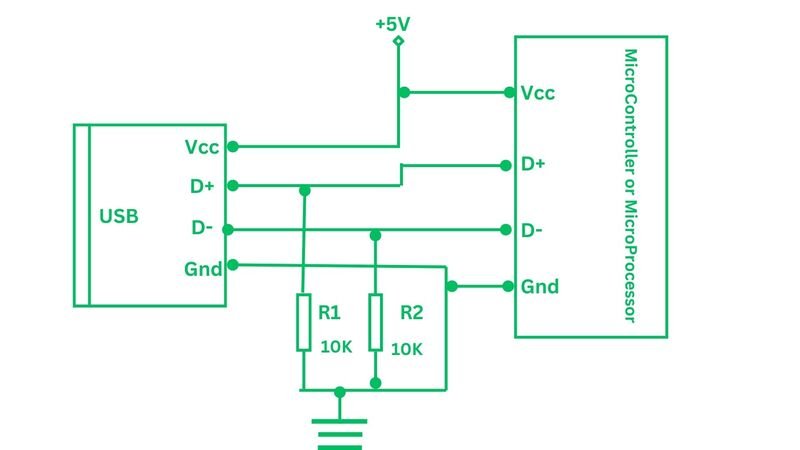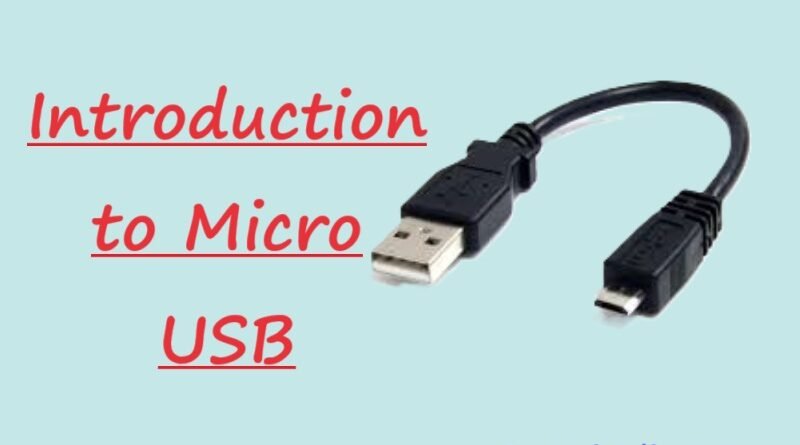What is Micro USB?
Introduction
In the fast-changing world of modern technology, Micro USB Connectors are very important. They help devices like phones and tablets to share information and get power. In this article, we will discuss the evolution of micro usb connectors and working of micro usb, as well as the advantages and disadvantages of micro usb. We will also do a comparison between other USB standards like USB-A, USB-B and USB-C. Let’s start with definition of micro USB!
What is Micro USB?
Micro USB is a type of USB (Universal Serial Bus) connector that is used in variety of electronic devices, such as smartphones, GPS devices and digital cameras. The Micro USB Connector has five pins which are generally used to transmit power and data between the device and a computer or charger. The connector is designed in a reversible form meaning that it can be plugged in either way which makes it easier to use. Micro USB Connectors have a unique trapezoidal shape and are typically found on the bottom or side of a device.
The Evolution of Micro USB Connectors
The first generation of micro USB connectors known as micro-USB A. This type of USB connectors had a compact design which allows them easy insertion and removal. However, they were limited in terms of data transfer speed and power output. As technology advanced the need for for faster charging and data transfer became important. This led to the development of the second generation, Micro-USB B connectors. These connectors provide higher data transfer rates and increased power output. They became widely adopted in smartphones, tablets and other portable devices. Yet, they still had limitations in terms of durability and flexibility.
To address these concerns, the USB Implementers Forum (USB-IF) introduced the third generation of micro USB connectors which is known as micro-USB C. These connectors features a reversible design which means they can be inserted in any orientation. They also offers faster data transfer speeds and higher power output which makes them ideal for high-performance device.
In recent years, micro USB connectors have been gradually replaced by the USB-C connectors in many devices. USB-C offers even faster data speeds and higher power output than micro-USB. Additionally, USB-C is more durable and versatile, with the ability to support multiple protocols such as HDMI and Display Port. While USB-C is becoming the new standard, micro USB connectors are still widely used in many devices. They are affordable, easily available and compatible with a wide range of accessories. As technology continue to evolve, it’s likely that USB-C will eventually replace micro-USB connectors altogether.
Working of Micro USB
Mainly the Micro USB jack has five pins. By which we can easily transfer the data and power. The 4th pin which is known as ID Pin. It is a mode detection mechanism. Which helps to determine the USB Connection is only used for power supply or for both power supply and data transfer. Pin1 and Pin5 are used to provide power(Vcc) and ground. The voltage for Vcc is usually +5V and is usually provided from the Microcontroller itself. The ground pin is connected to the ground of microcontroller. The other two pins are the (D+) and (D-). They should be connected to the D+ and D- pins of the host device. To make sure data transfers correctly, each of these pins needs a 15k pull down resistor.
Here’s a simple diagram to show how it all connects together

Comparison with other USB Standards (USB-A, USB-B & USB-C)
Here’s a comparison between micro USB with other USB standards such as USB-A, USB-B, USB-C
|
Features |
USB-A |
USB-B |
USB-C |
Micro-USB |
|---|---|---|---|---|
|
Shape |
Rectangular |
Square |
Reversible |
Reversible |
|
Size |
Standard |
Larger |
Smaller |
Smaller |
|
Flexibility |
Basic |
Basic |
Advanced |
Advanced |
|
Data Transfer |
Standard |
Standard |
Faster |
Faster |
|
Power Output |
Standard |
Standard |
Higher |
Higher |
|
Common Uses |
Keyboards, Mice |
Printers, Scanners |
Laptops, Smartphones |
Smartphones, Tablets |
|
Reversibility |
No |
No |
Yes |
Yes |
Applications of Micro USB
Let’s explore some common applications of Micro USB:
- Charging and Power Devices: Many smartphones, tablets and other portable electronic devices are equipped with Micro USB ports. This allows users to easily charge their devices using a standard micro USB cable.
- Data Transfer: Micro USB is not just limited to charging a device. It provides a reliable and efficient way to transfer data. By using the appropriate cable you can quickly and easily sync your devices and access your files. Additionally, Micro USB connectors can be used to connect devices that run DBMS software to host devices, allowing for efficient data transfer and management.
- Peripheral Connections: Micro USB is commonly used to connect peripheral devices to a host device. Such as printers, keyboards, mouse, mice, CPU(central processing unit) and other peripherals. For example many printers, mice and many other peripherals feature Micro USB ports for easy connection to computer, tablet and smartphones.
- Audio and Video Output: With the help of an adapter or cable, you can easily connect your device to a TV, Monitor or projector. This allows you to enjoy your favorite movies, videos or presentations on a larger screen.
- IoT and Smart Home Devices: Micro USB helps to connect various IoT devices. From Smart home devices like security cameras and smart speakers to wearable technology like fitness trackers and smart watches. Micro USB enables seamless communication and power supply to these devices
Advantages of Micro USB
Here are some common advantages of Micro USB:
- Compact Size: The small size of micro USB connectors makes them ideal for portable devices like smartphones and tablets.
- Data Transfer: Micro USB supports data transfer which allow for the quick and efficient exchange of files between them.
- Power Supply: Micro USB connectors can also be used to supply power to devices, which makes them adaptable in various applications.
- Universal Compatibility: Micro USB is widely used and supported by a many group of devices making them a universal standard.
- Reversible Design: The reversible design of micro USB connectors allows for easy insertion and removal, regardless of orientation.
Disadvantages of Micro USB
Here are some of the disadvantages of Micro USB:
- Limited Power Output: The power output of Micro USB connectors is limited compared to newer standard like USB-C, which can affect charging times.
- Data Transfer Speed: While Micro USB supports data transfer, its speed is slower compared to newer standards like USB 3.0 and USB-C.
- Compatibility: As technology advances, newer devices may not support Micro USB which can causes potential issues with older devices.
- Durability: Micro USB connectors damaged easily, especially if you use them a lot which can cause problems with connecting.
Conclusion
In conclusion, Micro USB is a small, widely used connector found in many electronic devices. It’s good for charging and transferring data, but it’s not as fast or durable as newer connectors like USB-C. However, it remains a popular choice due to its affordability and compatibility with a wide range of devices.
